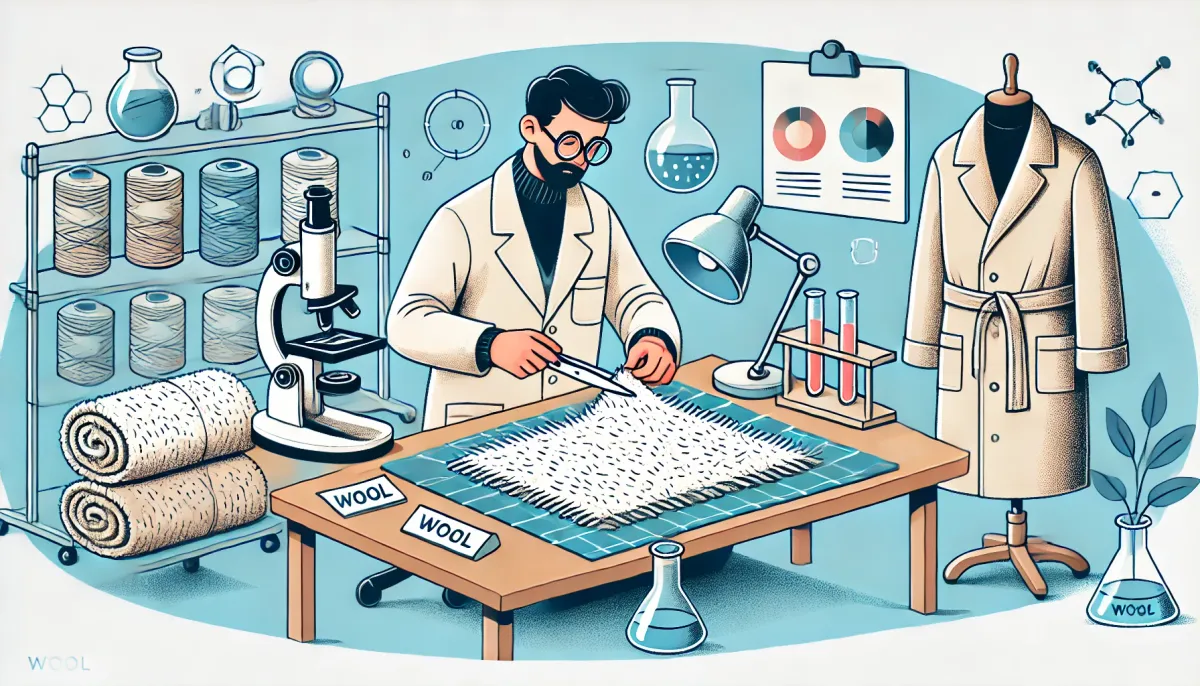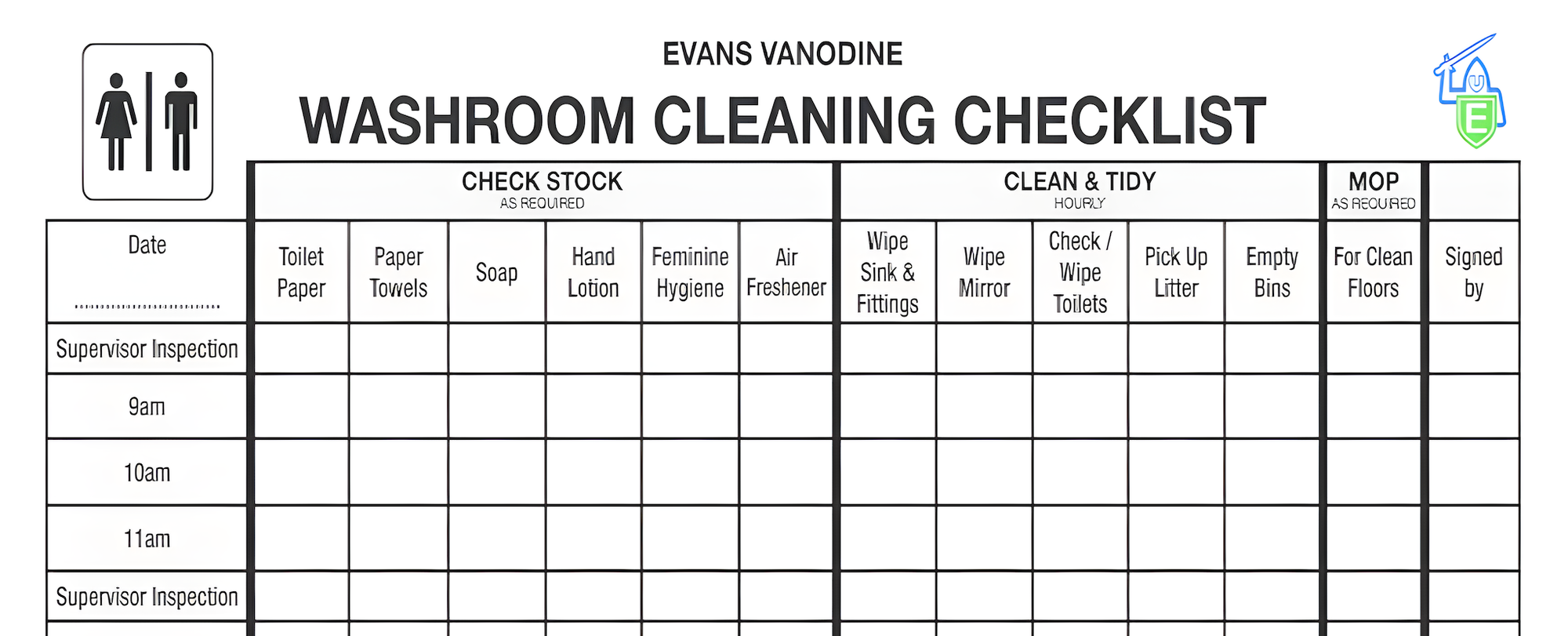What Is an Operational Definition? Definition and 4 Examples
Sometimes you talk to someone about something particular only to find out that you talk about different things. Let's see how list can help you find the common language.

What is “Clean”?
What does “clean” mean? The Oxford English Dictionary defines it as follows [1]:
Free from dirt or filth; unsoiled or unstained: the usual opposite of dirty or foul.
This seems straightforward. Now, let’s consider practical applications. You enter a place and look around. There is no dirt, trash, or stains, but the air feels stuffy, and an unpleasant odor lingers. Would you consider this place clean?
Consider another example that parents often face. A child has made a mess, and when you ask them to clean up, they either insist that it’s already fine or only tidy up the largest items or those easily visible.
Even if everything you believe needs cleaning is addressed, you may still feel that it hasn’t truly become clean. After all, the floor is dusty, and it would be beneficial to vacuum and wash it. Yet, in the context of your interaction with the child, it is deemed “clean.”
How can it be that the word “clean” remains the same, yet interpretations vary? The issue lies in its definition. The one provided above is lexical, meaning it describes the concept in a way that is generally understandable.
If two people discussing “clean” both envision the absence of dirt — one thinking of “funny” and the other of “salty” — then the lexical definition serves its purpose. However, it does not fulfill our objective.
The Operational Definition Defined
When it comes to practice and interested parties are involved, lexical or conceptual definitions are no longer sufficient.
There is a need to confirm something that can result from complex behaviors, such as a newly manufactured modern car. This is where the concept of an operational definition comes into play. Let's explore this by examining a quote from William Deming's book “Out of the Crisis” [2]:
What is an operational definition? An operational definition puts communicable meaning into a concept. Adjectives like good, reliable, uniform, round, tired, safe, unsafe, unemployed have no communicable meaning until they are expressed in operational terms of sampling, test, and criterion. The concept of a definition is ineffable: It cannot be communicated to someone else. An operational definition is one that reasonable men can agree on.
An interesting point here is that the concept of “operational definition” is defined operationally. The provided operational definition comprises steps that help define itself.
The phrase “puts communicable meaning into a concept” describes an action, the operation that allows for measurable descriptions, ensuring clarity regarding when specific behaviors occur.
While it might seem beneficial to elaborate further on what “communicable” entails to enhance the operational aspect and provide clarity on when communicable behavior occurs, let’s not dwell on that.
It’s time to start examining examples.
The Operational Definitions Examples
Defining the Behavior of the Child Cleaning Up Paper
Let’s return to the child who made a mess and define their behavior in terms of cleaning up paper scraps. Imagine they cut out a figure from paper, leaving scraps on the floor. What does it mean to “make it clean” in this case? Perhaps it can be defined as follows:
- Remove all paper scraps from the floor.
Unfortunately, children sometimes find ways to circumvent useful recommendations, so all the scraps may end up under the rug. This results in an inadequate operational definition. A more precise way to operationally define cleanliness after paper cutting might be:
- Remove all paper scraps from the floor into a trash bag;
- Lift the edge of the rug near the table and remove any scraps that have landed there into the trash bag.
If there is a couch instead of a rug, the same principles apply. If there is a cabinet with a low gap between the bottom and the floor, it may not be necessary to remove the paper scraps from underneath it, as this could be too labor-intensive and require physically strong adults.
This challenging aspect would not be included in the definition of “to make it clean”.
This meticulous approach may assist you in future communications with family members. With enhanced communication, it might become easier to reach an agreement and make decisions.
Defining Criteria for Consistent Washroom Cleanliness
Now, let’s examine an example of what constitutes cleanliness for visitors in a washroom today:

How do we define “making the washroom clean” when striving for high-quality service for visitors and a positive image in their eyes? This process includes several crucial steps:
- Replenish toilet paper supplies;
- Replenish paper towel supplies;
- Replenish soap supplies;
- Replenish hand lotion supplies;
- Replenish feminine hygiene supplies;
- Refill air freshener;
- Wipe sinks and fittings;
- Wipe mirrors;
- Check and wipe toilets;
- Pick up litter;
- Empty bins;
- Clean floors;
- Sign off on the work done after each cleaning;
- The supervisor signs off every few hours.
Such an operational definition is not created once; it is likely refined over time until “making it clean” no longer raises questions among stakeholders. It helps define behavior and actions of those who makes the washrooms clean.
This implies a process of feedback and consistent data collection. It is crucial to ensure that those collecting the data understand the methods and objectives behind the data collection to avoid inconsistencies and errors. Feedback loops that gather data stem from systems thinking.
Did you expect we could delve so deeply into defining a cleaner’s responsibilities?
Classic Example
A classic example from Deming's book illustrates this point. What is a “blanket consisting of 50% wool”? It can be defined in terms of the manufacturer:
- Take a certain amount of wool;
- Take the same amount of cotton;
- Carry out operations to produce the blanket.
This example might remind you of the joke “How to draw an owl” [3], but we won't linger on that.
While few of us produce blankets, many use them. How can a consumer determine if a blanket meets the stated characteristics? How do we collect the necessary data and numerical values for this?
The Most Convenient Blanket (For Measurements and Data Collection)
A convenient definition would be if the blanket looked something like this:

A very nice example is provided for ease of measurement. You’ll have all the data collected at a glance. But would you be satisfied with such a blanket as its user?
A More Convenient Blanket for User
If you prefer a more familiar blanket, measuring the declared 50% wool content may be more challenging. The process for collecting data to define the blanket might look like this:
- Cut 10 holes in the blanket, each with a diameter of 1 or 1.5 cm, in random locations.
- Number the cut pieces from 1 to 10 and send them for examination.
- Expect a chemist to measure and analyze the samples according to established procedures.
- Ask the chemist to record the weight fraction of wool in each piece using the special weighing scale.
- Calculate the average wool content based on the results of the 10 measurements.
- Determine the maximum wool content among the measurements.
- Determine the minimum wool content among the measurements.
- Expect the average value to be ≥ 50% and ≤ 55%.
- Expect the difference between maximum and minimum values to be ≤ 2%.
To ensure the accuracy of such detailed operational definitions, it is often helpful to refer to relevant research articles that provide insights into established methodologies and data interpretation. Thus, when researchers measure the blanket, they can rely on established knowledge and methods.
This is how you can identify a “blanket consisting of 50% wool” as its user. Is this a good operational definition? It appears quite scientific as well as this definition includes accurate data collection: random sampling, range of average value, maximum, and minimum.
Let this thought warm someone who goes to sleep covered with a blanket featuring 10 randomly located holes — a 50% wool blanket with reduced wool content.
The Updated Data Collection Method and Happier Blanket User
Despite the flaw in the previous definition, it can still serve real-life purposes. For example, the manufacturer can engage an independent service to randomly examine the blankets and publish the results of the checks. This kind of assessment can help demonstrate manufacturing consistency, which is good for business reputation.
This is where we can say that the statistical process control, another idea praised by Deming, comes into play.
It is quite possible that less destructive analyzes can be conducted on different levels of the blanket structure. Yes, there might be an alternative method to cutting holes.
We could focus on radio analysis or methods related to checking static electricity. Perhaps there are even other concepts to explore. However, this is not essential for illustrating the topic; the operational definition provided above is sufficient for the necessary measurement.
No more detail looks required here.
Conclusion. Operational Definitions Serve Everywhere
Operational definition is a remarkable list of tasks — a defining to-do list, if you will. It serves as a useful tool when the parties involved are interested in a specific matter and simple dictionary definitions are no longer sufficient.
An operational definition does not emerge fully formed; it is refined through ongoing attempts to satisfy those who depend on it.
This approach is not only used in business. In scientific research articles, the methods section is crucial as it details the scales used for various constructs, providing essential information on how researchers operate and validate their measures.
In medicine, it provides vital assistance. How do we ensure comparable measurements? Let’s establish a common procedure. For example, if you are measuring “blood pressure,” detail the steps involved, such as “using a digital sphygmomanometer on the right arm after a 10-minute rest”.
If a doctor does some eyes-related procedures, then pupil dilation and especially its size when dilated, could also complete the number of factors measured in the definition. Such definitions are also used in psychology. The one that is known as operant psychology.
A good operational definition is the backbone of any reliable research study or practical application. It ensures that everyone involved has a clear understanding of what is being measured and how.
Do you want to see other specific examples of operational definitions (some of which are quite lengthy)? Read this blog post.
Were you glad to discover what the special form of list, operational definition, is? Subscribe to the “So List” blog and explore more about the various forms that lists and checklists can take.
List of Links
[1] “Clean” from the Oxford English Dictionary
[2] William Deming, “Out of the Crisis”, ISBN 0-911379-01-0
[3] “How to Draw an Owl” from Memedroid



